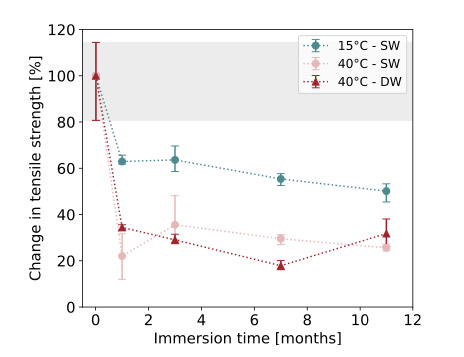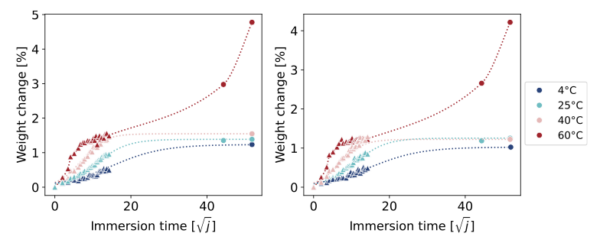Basalt Fibers in Marine Composites: A Reliable Solution?

With the growing demand for sustainable and high-performance materials, basalt fibers have become a promising reinforcement for marine composites.
Basalt fibers show promise as a reinforcement material for marine polymer composites. They offer superior mechanical properties and a lower environmental impact than traditional reinforcements like glass and carbon fibers. However, their long-term performance in seawater requires further study.
You can also read: Redesigning Marine Structures for Sustainability.
Long-Term Seawater Exposure
French researchers conducted a study to evaluate basalt fiber and basalt/epoxy composite degradation in seawater. The fibers were submerged at 15ºC and 40ºC for 11 months, and the composites at 4ºC, 25ºC, 40ºC, and 60ºC for 7.5 years. The study assessed changes in physical, chemical, and mechanical properties. The results of this rigorous analysis provide critical insights into the durability of basalt-based materials in harsh marine conditions.
Mechanical Performance
Basalt fibers showed a sharp initial loss in tensile strength, stabilizing at a temperature-dependent plateau. On the other hand, after 7.5 years, basalt/epoxy composites showed reductions in interlaminar shear strength of 18% at 25°C and 25% at 40°C. These reductions indicated a weakened fiber-matrix interface due to surface degradation. However, the epoxy matrix provided partial protection, mitigating fiber degradation compared to standalone fibers. Cracks and defects in the matrix accelerated water diffusion, leading to localized mechanical property loss and fiber deterioration.

The image illustrates the change in strength for samples aged at 15°C in seawater, 40°C in seawater, and 40°C in deionized water. Courtesy of Basalt fibre degradation in seawater and consequences for long term composite reinforcement.
Corrosive Effects
Water absorption was temperature-dependent. Below 60°C, the saturation was reversible, but continuous uptake occurred at higher temperatures, causing matrix degradation and yellowing. SEM and EPMA analyses identified surface corrosion and iron oxide-rich layers on fibers. The oxidized layer initially protected the fibers but degraded the fiber-matrix interface over time. Fiber degradation gradients showed that the matrix slowed water diffusion. However, cracks accelerated deterioration, emphasizing the interplay of chemical and physical processes in long-term seawater exposure.

The image illustrates the varying water absorption curves at different temperatures for (a) basalt/epoxy, and (b) E-glass/epoxy. Courtesy of Basalt fibre degradation in seawater and consequences for long term composite reinforcement.
Future Research Requires Enhancing Durability
Basalt fibers exhibit favorable mechanical properties and some stability in seawater. However, prolonged exposure leads to significant strength degradation due to surface corrosion and matrix interactions. The epoxy matrix partially protected the fibers by slowing water diffusion, but it did not fully prevent interface weakening. Further research is needed to improve durability. Developing advanced protective coatings or optimizing composite formulations could address these challenges, enhancing basalt-based materials’ reliability and sustainability in demanding marine environments.
